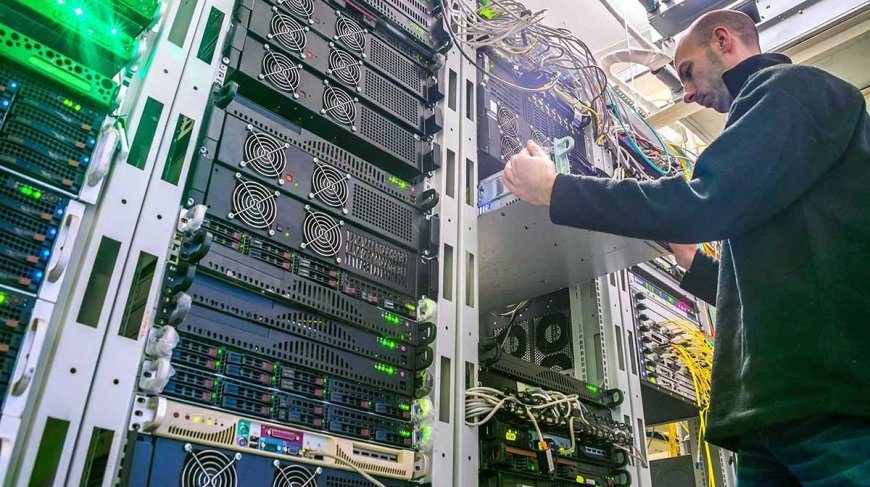The Role of ITAD in Corporate Sustainability Initiatives

In today's business landscape, sustainability is no longer a mere buzzword but a strategic imperative. Companies across the globe are recognizing the importance of integrating sustainable practices into their operations.
One crucial aspect of corporate sustainability that often goes unnoticed is IT Asset Disposition (ITAD). ITAD involves the safe and responsible disposal of electronic equipment, ensuring that valuable resources are recovered, and environmental harm is minimized.
This blog explores the role of ITAD in corporate sustainability initiatives and how it helps businesses achieve their environmental and economic goals.
Understanding ITAD
What is ITAD?
IT Asset Disposition (ITAD) refers to the processes and practices involved in managing and disposing of obsolete or unwanted electronic equipment in a secure and environmentally responsible manner.
This includes everything from computers, servers, and smartphones to more specialized equipment such as data center hardware and telecommunications devices. The primary goals of ITAD are to:
-
Ensure data security: Safeguarding sensitive information during the disposal process.
-
Comply with legal and environmental regulations: Adhering to laws and standards governing e-waste disposal.
-
Maximize asset value: Recovering the maximum possible value from retired assets through resale, recycling, or repurposing.
-
Reduce environmental impact: Minimizing the amount of e-waste that ends up in landfills.
The Growing Importance of ITAD
With the rapid pace of technological advancement, electronic devices are being replaced more frequently than ever before. This trend has led to a significant increase in electronic waste (e-waste), posing severe environmental challenges.
Proper ITAD practices are essential to mitigating these challenges by ensuring e-waste is handled environmentally responsible and economically beneficially.
ITAD and Corporate Sustainability
Aligning ITAD with Sustainability Goals
Sustainability initiatives often focus on reducing carbon footprints, conserving natural resources, and minimizing waste. ITAD plays a critical role in these efforts by:
-
Reducing E-Waste: Through refurbishment and recycling, ITAD prevents electronic devices from ending up in landfills, where they can release harmful substances into the environment.
-
Conserving Resources: ITAD ensures that valuable materials such as metals and plastics are recovered and reused, reducing the need for virgin resources.
-
Lowering Carbon Emissions: By extending the lifecycle of electronic devices and promoting recycling, ITAD helps reduce the carbon emissions associated with manufacturing new devices.
Enhancing Corporate Social Responsibility (CSR)
Corporate Social Responsibility (CSR) encompasses a company's efforts to contribute positively to society and the environment. ITAD enhances CSR initiatives by:
-
Promoting Ethical Practices: Ensuring that e-waste is processed in compliance with legal and ethical standards.
-
Supporting Local Communities: Donating refurbished devices to schools, non-profits, and other community organizations can bridge the digital divide and provide access to technology.
-
Improving Brand Image: Companies that prioritize ITAD demonstrate their commitment to sustainability, which can enhance their reputation and appeal to eco-conscious consumers and investors.
Implementing Effective ITAD Programs
Steps to a Successful ITAD Program
To effectively integrate ITAD into corporate sustainability initiatives, businesses should follow these key steps:
-
Conduct an Asset Inventory: Maintain a comprehensive inventory of all IT assets to track their lifecycle and identify when they need to be retired or replaced.
-
Establish ITAD Policies: Develop clear policies and procedures for IT asset disposition, including guidelines for data destruction, recycling, and resale.
-
Partner with a Certified ITAD Provider: Work with an ITAD provider certified by recognized organizations such as e-Stewards or R2 to ensure compliance with industry standards.
-
Ensure Data Security: Implement stringent data destruction methods, such as data wiping or physical destruction, to protect sensitive information.
-
Track and Report: Keep detailed records of ITAD activities and report on the environmental and economic benefits achieved through the program.
Choosing the Right ITAD Partner
Selecting the right ITAD partner is crucial for the success of your sustainability initiatives. Consider the following factors when evaluating potential ITAD providers:
-
Certifications and Compliance: Ensure that the provider is certified by reputable organizations and complies with all relevant regulations.
-
Data Security Measures: Assess the provider's data destruction methods and their ability to guarantee the secure handling of sensitive information.
-
Sustainability Practices: Look for a provider that prioritizes environmental sustainability through recycling, refurbishment, and responsible disposal methods.
-
Transparency and Reporting: Choose a provider that offers transparent processes and detailed reporting on the outcomes of their ITAD services near me.
The Future of ITAD in Corporate Sustainability
Emerging Trends and Innovations
The ITAD industry is continually evolving, with new trends and innovations shaping its future. Some emerging trends include:
-
Advanced Data Destruction Technologies: Development of more sophisticated data destruction methods to enhance security.
-
AI and Automation: Leveraging AI and automation to streamline ITAD processes and improve efficiency.
-
Blockchain for Transparency: Using blockchain technology to ensure transparency and traceability in the ITAD supply chain.
The Role of ITAD in a Sustainable Future
As businesses continue to prioritize sustainability, the role of ITAD will become increasingly important. By integrating ITAD into their sustainability strategies, companies can not only mitigate environmental impacts but also achieve significant economic benefits.
ITAD is not just about disposing of old electronics—it's about transforming waste into valuable resources and contributing to a more sustainable future.
Conclusion
Incorporating ITAD into corporate sustainability initiatives is a strategic move that offers numerous benefits. From reducing e-waste and conserving resources to enhancing CSR and improving brand image, ITAD plays a vital role in achieving sustainability goals.
By implementing effective ITAD programs and partnering with reputable providers, businesses can ensure that their IT assets are disposed of responsibly, securely, and sustainably. As the importance of sustainability continues to grow, ITAD will remain a key component of corporate strategies aimed at creating a greener, more sustainable world.
What's Your Reaction?



















![Safe Abortion pills[[+971521786258]] Doha Qatar/Ar Rayyan Qatar/Umm Salal Mu?ammad Qatar/Al Wakrah](https://news.bangboxonline.com/uploads/images/202501/image_430x256_679bc869b24fb.jpg)




